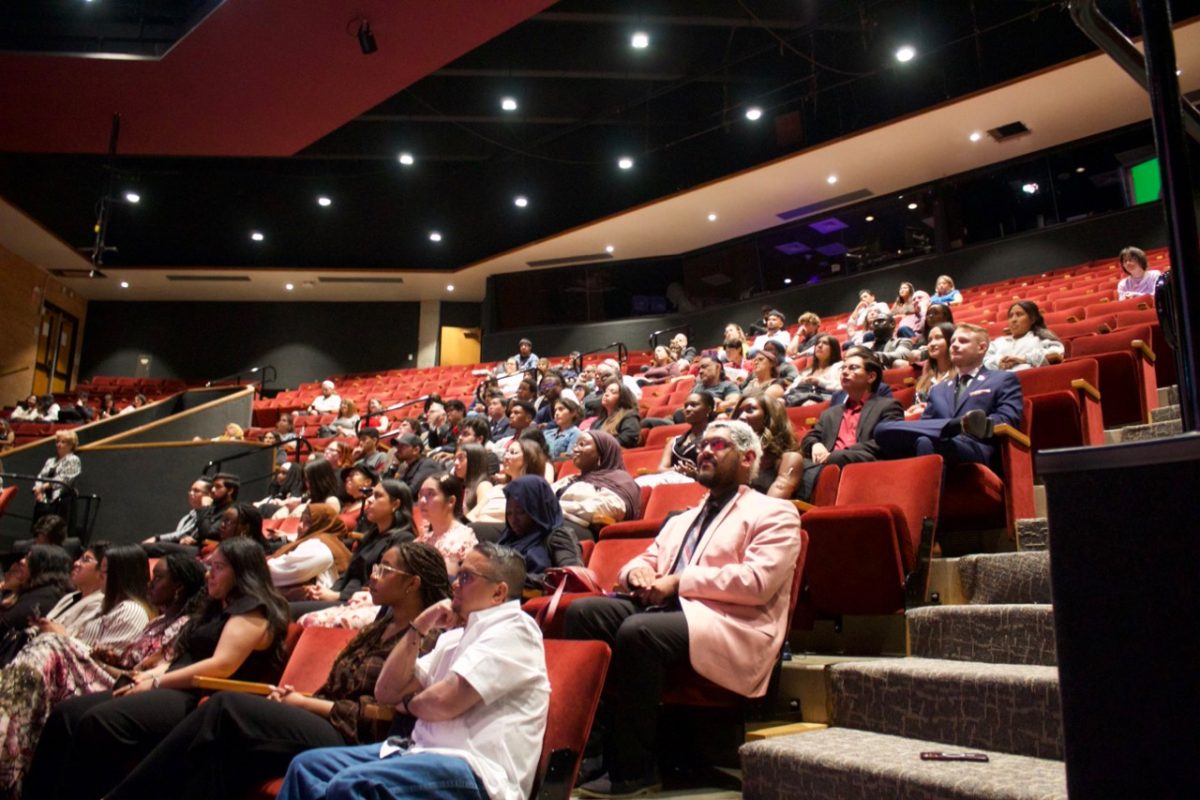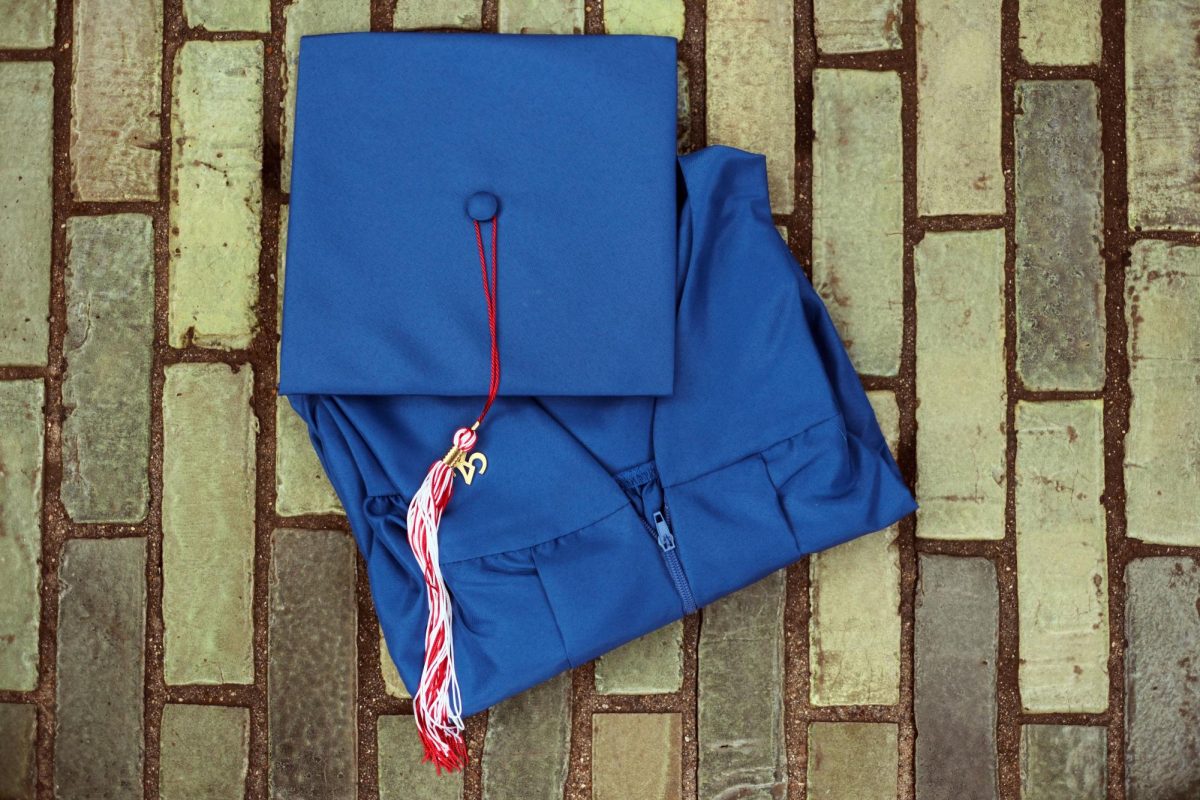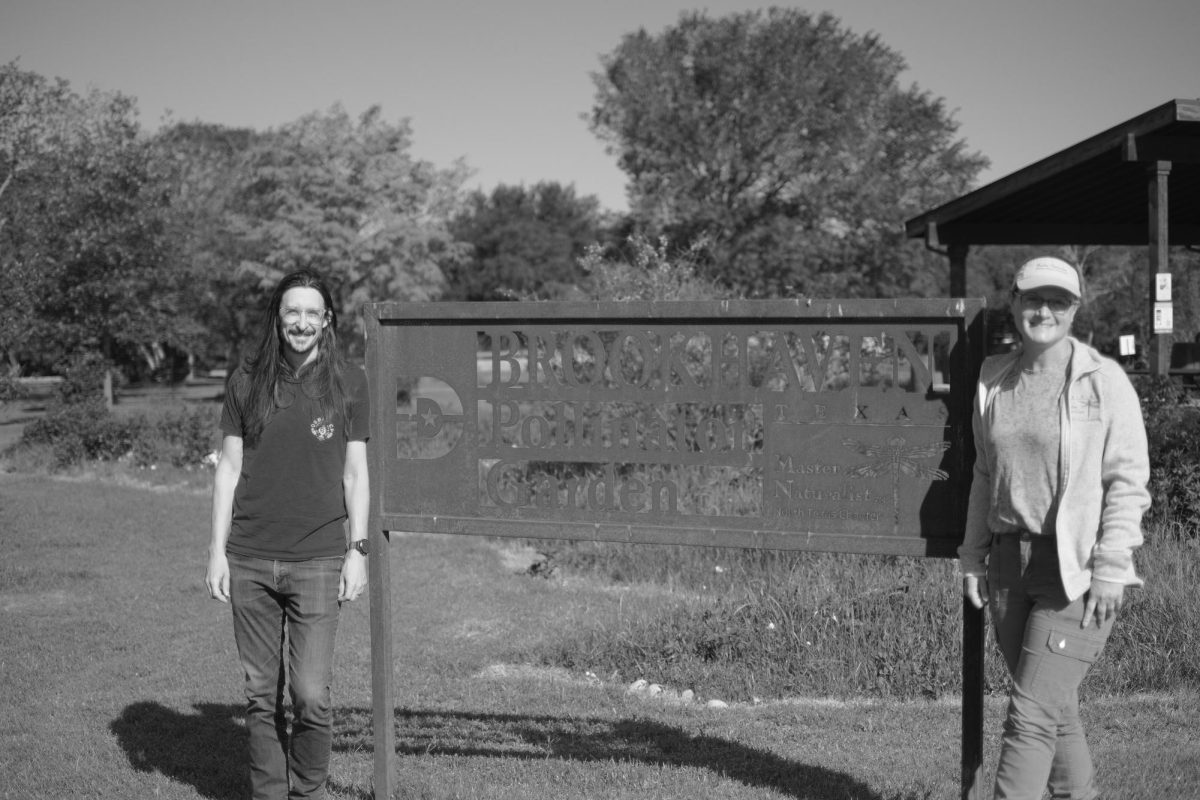By Olivia Rodriguez
Contributing Writer
With new technology developing every day and easy access to information, anyone with a smart phone or tablet can be a first-hand reporter.
The Brookhaven College history department co-sponsored a film screening and panel discussion March 28 in Room K234. Department members presented the 2005 movie “Good Night, and Good Luck,” written by George Clooney and Grant Heslov. The themes in “Good Night, and Good Luck” reflect much of what is going on in our society today, Cameron Sinclair, history professor, said. The theme this semester for IGNITE, Institute for Political Studies and the history department is media literacy. Sinclair said the movie talks a lot about the news media, dealing with fear in politics and we just thought this was a good representative of all those themes, Sinclair said.
“Good Night, and Good Luck” is a historical drama about the early days of American television broadcast journalism in the 1950s. Edward Murrow (David Strathairn), Fred Friendly (George Clooney) and their news team receive word about Lt. Milo Radulovich, a U.S. Air Force Reserves officer, who is discharged for associating with communists.
Two Brookhaven government professors, Ahad Hayaud-Din, Asmara Saleemi, and Christopher Grice, a sociology professor, were the panelists. Sinclair, moderated the panel discussion. The panelists discussed the themes and lessons in the film.
The charges filed against Radulovich are held in a manila envelope that nobody can see, which spurs Murrow to present this information to CBS News against his director’s wishes. Sig Mickelson, Murrow’s director, warned him that presenting this story could bring much more problems and accusations to CBS and those who sponsor the company.
Hayaud-Din said, “A lesson given by Murrow was that he was giving a warning to citizens and trying to make them aware of the dangers to their society and to their freedom.”
People see these types of lessons repeat themselves, Hayaud-Din said. The terrorist attacks Sept. 11, 2001 is an example of that, he said. After the attacks, many people were scared of being labeled terrorists and the danger associated with that.
Grice said the role media plays in our society is an important aspect of the film. “Is it to report?” he said. “Is it to inform, to educate or is it all of the above?”
There is so much diversity, ethnicity, nationality, immigration status, class and gender in one country, Grice said. Americans are still trying to figure out how to come to terms with what direction the country is going, what role the media will play and how it will shape us today in 2018, he said.
Saleemi said the film parallels what is going on during society’s time with the media. She said she wonders if journalists in the 1950s had to deal with the same issues that reporters and journalists have to deal with now in regards to their information and credibility being challenged.
She said. through clicks and likes, information can be spread quickly, but at the same time there are legitimate journalists out there with integrity whose information is challenged and sometimes over looked.
She also said at the same time these journalists were being called propagandists. How do we know what is true if we see one source talking about one thing and another source talking about another thing, Saleemi said. She said how we become consumers of good information in media is a big theme in this film.






